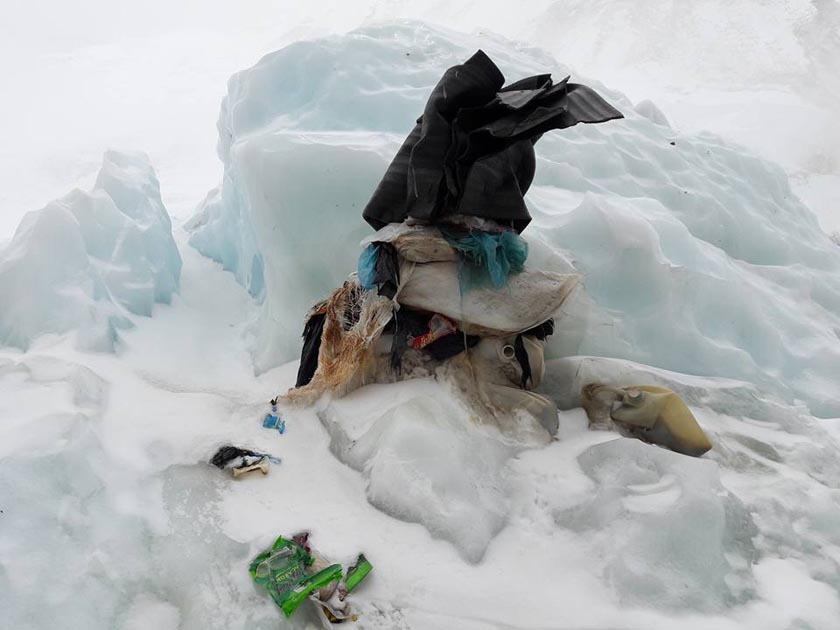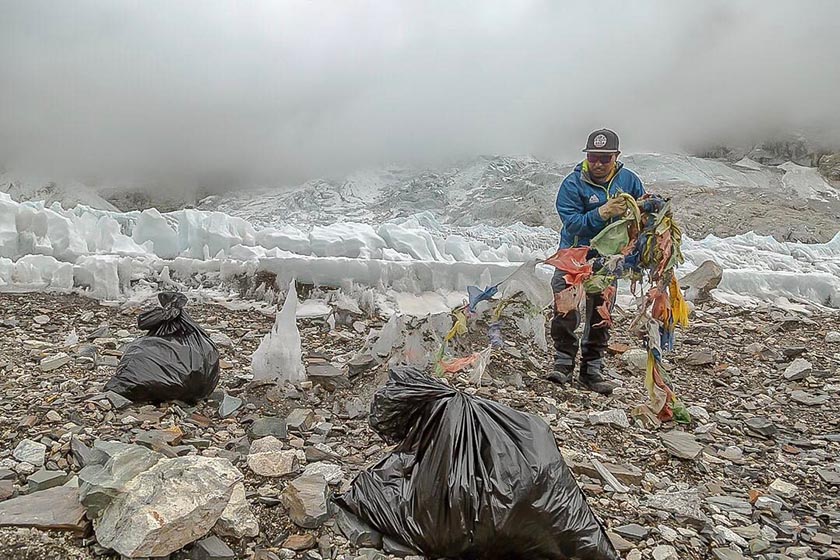Climbers in camp rotation see trash "here and there" on Everest
KATHMANDU: Mountaineers who reached the higher camps during their "rotation practice" on Mt Everest shared that the world's highest mountain is heavily littered.
The world climbers continue their acclimatisation activities on Mt Everest region after the Government of Nepal issued nearly 500 climbing permits to different expeditions on Mt Everest, Mt Lhotse and Mt Nuptse this season.
From lower icefall level to Camp II at 6460 metres, there is trash here and there, Ang Dawa Sherpa, a mountain guide who returned from Camp II to base camp, told THT Online.
Taking advantage of the government's failure to monitor human activities on mountains, Sherpa said, local agencies have left garbage on Camp II in the last season, turning the area most polluted ever in the history of Mt Everest climbing.

Sherpa, who went back to Mt Everest with his clients, said his team safely returned to the base camp from Camp II today. He shared that the team members spent two nights at Camp I and one at Camp II.
Holding the government and expedition operators responsible for "a lot of pollution" in Camp II, he recalled that "everywhere at Camp II, you can see garbage."
As liaison officers failed to show up at base camp to monitor mountaineers' activities, a very few responsible climbers oblige to the garbage deposit rule. Many commercial expeditions end up leaving trash everywhere on the mountains.
Besides, there are a few responsible expeditions on Mt Everest. Climbers from the Alpine Ascents International expedition reported that they collected garbage from the lower icefall section on Thursday.
"In an hour, our team picked up close to a hundred pounds of trash just a short walk from base camp. It's mostly small pieces of plastic bags, wrappers, tent pieces, batteries, old prayer flags, pieces of grain sacks and old cans," Ben Jones, team leader for AAI, shared.
During a dinner discussion, a team of climbers came up with the idea of collecting trash they had seen the day before walking into the lower icefall, according to him.
" I have never thought the reporting and media coverage of Mt Everest being a big trash dump was fair or accurate. There is trash around though. Not so much in base camp as it is pretty regulated but it's around, and as the glacier is melting out we are seeing more from years past," added Jones, who has been leading the international teams on Mt Everest and other mountains in Nepal since seven years.
"One day I would love to help make happen a day in base camp where we all stopped and spent an hour collecting trash," he said, expressing his belief that it will happen "through some simple education and leadership in time".
Expedition Operators Association of Nepal said that a few bags have already been sent to the base camp and Camp II to collect trash.
"The idea is that trash collected by climbers this season can be airlifted by helicopters next season after dropping the rope fixing gear at Camp II," the EOAN officials said.
Sagarmatha Pollution Control Committee is also doing its bit to make the environment clean on Mt Everest region. But, the government has long failed to implement its rule that states each member of an expedition must bring back at least eight kilograms of garbage, apart from their own trash from Mt Everest, Mt Lhotse and Mt Nuptse expeditions.
READ ALSO:






